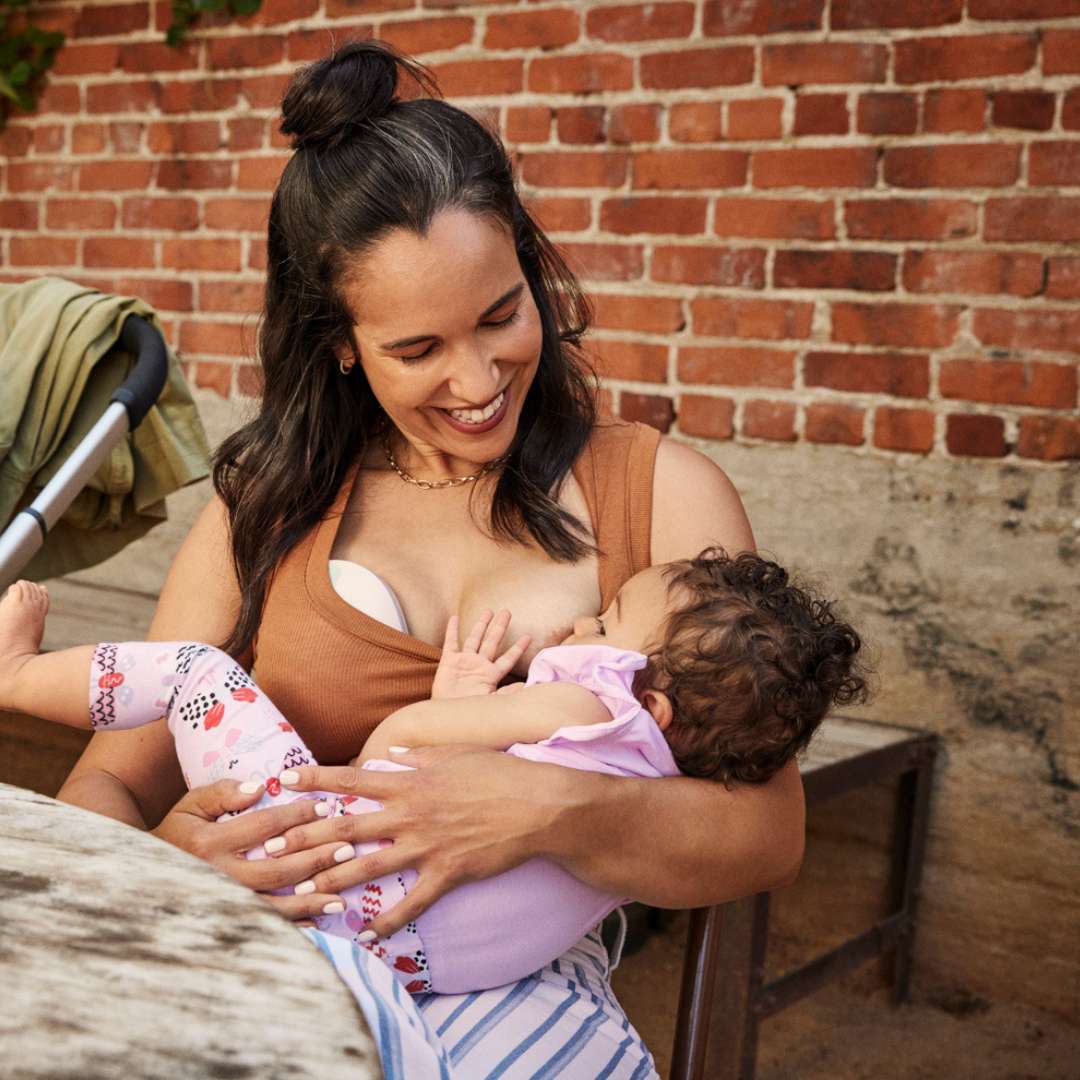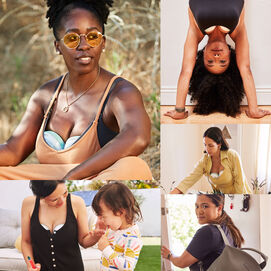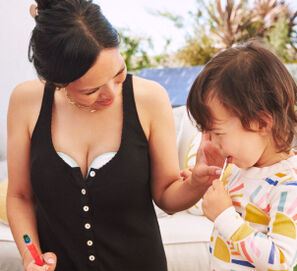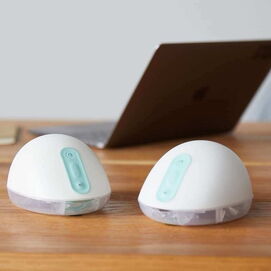Experiencing some pain and discomfort while pumping? We can help! Your pumping experience shouldn’t have to be painful. It’s important to pinpoint what is causing the pain so that you can quickly address the problem and feed your baby stress-free.
Need some answers? Keep reading to learn everything you need to know about breast pain while pumping, and the steps you can take to ensure it doesn’t happen.
Why breastfeeding hurts
A study conducted by the FDA and CDC found that 75% of new moms experienced breastfeeding pain within the first 2 weeks postpartum. While it is normal to experience breast and nipple tenderness during nursing, breastfeeding should not be painful while you are feeding your baby.
If breastfeeding is painful for you, there is likely something happening behind the scenes and it's also very possible that it can be fixed!. Below are common reasons why breastfeeding can hurt after delivery and what you can do to help lessen your discomfort.
Common Reasons Breastfeeding Can Hurt Weeks After Delivery
There are a variety of common reasons why pumping can hurt weeks after delivery. Identifying the cause is the first step in feeling better and feeding your baby without pain.
Mastitis or other maternal breast issues
Mastitis is an infection in the breast that is commonly caused by an untreated clogged duct. Symptoms include breast engorgement, pain, redness, and a fever. While it is safe to pump with mastitis, getting it treated immediately is crucial so that it doesn’t worsen.
Other maternal breast issues that can cause pain while nursing include skin conditions, clogged milk ducts, too much milk, and previous nipple injuries. If you are suffering from mastitis or other related symptoms, visit a doctor to get treated ASAP.
Improper latch
An improper latch is a common problem for nipple pain while breastfeeding. Improper latching can be the result of not feeding in the right position, poor let down, or inverted nipples. Tongue ties, a condition that restricts a baby’s range of motion in their tongue, can also make it more difficult to latch.
Remember that finding the perfect latch takes time, and it’s a learning process for both you and your baby. Working with a lactation consultant, doctor, or seeking advice from other new moms are great ways to get help with latching.
Flange size
The flange is the part of a breast pump that comes into contact with your nipple. Similar to an improper latch, if a flange is the incorrect size it may be painful to pump. If you need to check your flange size, Willow offers a step by step sizing guide.
Pump strength
One common misconception of pumping milk is that the higher the strength, more milk will be pumped. While you want an effective pump that expresses milk from your breast in a timely manner, you don’t want it to be too harsh. If the pump setting is too strong for your breasts, this can result in swelling and tenderness around the area.
All breast and nipple elasticities are different, so setting your pump on the highest setting during your first sessions is not the best tactic. Slowly work with the pressure of your pump to find a setting that works well for you and your body.
When to be concerned about breastfeeding pain
Some breastfeeding pain symptoms can signal that there is an infection caused by clogged ducts, yeast, or thrush. These conditions are treatable, but will only get worse if not addressed. Because of this, it’s important to call your doctor if you are suffering from any of the following symptoms:
- Sharp, stabbing pain in the nipple
- Sharp pain in the breast
- Blisters or bruising
- Blanching nipple
- Severe redness to the nipple
- Stinging
How to Relieve Pain While Breastfeeding
The most important step to offsetting pain while breastfeeding is to continue pumping or feeding when possible. Whether it’s latching problems or clogged milk ducts causing your pain, not expressing milk can make the symptoms worse.
While you continue to breastfeed, there are other gentle, homeopathic methods that can help alleviate some of the pain. If you need some immediate relief, give some of these at-home remedies a shot:
-
Warm compresses: If your breasts are engorged or clogged, place warm (but not hot!) compresses on your breasts to encourage milk flow. Taking a warm shower right before nursing is also a great alternative for this method. Ideally, you’ll be stimulating more circulation for the let down period.
-
Gentle massages: If you have a clogged duct, gently massaging the area or lump where it appears to be clogged can help to stimulate circulation.
-
Chilled cabbage: That’s not a typo! A 2015 study found that placing chilled cabbage on engorged breasts gives similar levels of relief as a warm compress.
-
Vary breastfeeding positions: Feeding or pumping in the same position is not as effective as alternating between a few different positions to ensure that all of your milk is drained.
-
Apply breast milk or salves to cracked nipples: Fun fact -- breast milk has antimicrobial properties which help to eliminate inflammation and bacterial growth! Applying your own breast milk or other OTC creams to cracked and sore nipples can reduce the risk of infection and speed up the healing process.
Struggling from breast pain while pumping? You’re not alone mama, but your nursing experience doesn’t have to be painful! Whether it’s help with pump sizing, or general questions about exclusive pumping, Willow has you covered.
This article was written in partnership with our International Board Certified Lactation Consultant, Wendy Wright, who loves working side by side with moms and babies to find that secret sauce! She’s also a mother of two and the Mom Experience Lead at Willow Pump.
Get pumping support with Simplifed
Get pumping support with Simplifed
Get access to free virtual feeding support from the lactation consultants at Simplifed. They can help you navigate supply issues, introduce a bottle, and more, and are trained on Willow pumps.














